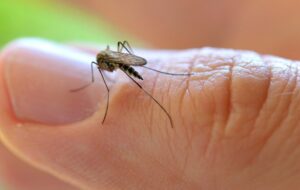A Guide to Managing Insect Bites and Allergic Reactions
Encounters with insects are inevitable, but when bites lead to discomfort or allergic reactions, having basic first aid knowledge becomes crucial. This guide offers comprehensive insights into managing insect bites and addressing allergic reactions effectively.
**1. Identify the Insect Bite:
The first step in providing first aid is identifying the insect bite. Different insects can cause varying reactions, from mosquitoes and flies to bees and wasps. Understanding the source helps tailor the response.
Swift and efficient, first aid is essential for injuries. Acquire vital skills to respond promptly, minimizing harm, and promoting recovery in various emergency situations.
**2. Clean the Bite Area:
Upon identifying the bite, clean the affected area with mild soap and water. This helps prevent infection and removes any residual insect venom or saliva.
**3. Apply a Cold Compress:
To alleviate pain and reduce swelling, apply a cold compress to the bite area. A clean cloth or ice pack can be used, but ensure there’s a barrier to prevent direct contact with the skin.
**4. Avoid Scratching:
Resist the urge to scratch the bite, as this can lead to further irritation and increase the risk of infection. If itching is severe, consider using an over-the-counter antihistamine or applying an anti-itch cream.
**5. Use Calamine Lotion:
For bites that cause redness and discomfort, calamine lotion can be beneficial. This soothing solution helps relieve itching and provides a protective barrier over the bite.
**6. Elevate the Limb:
If the bite occurs on an arm or leg, consider elevating the limb. This can help reduce swelling by promoting better blood circulation.
**7. Take Over-the-Counter Pain Relievers:
Over-the-counter pain relievers such as acetaminophen or ibuprofen can help manage pain and inflammation associated with insect bites. Always follow the recommended dosage.
**8. Watch for Signs of Allergic Reactions:
Some individuals may have allergic reactions to insect bites, characterized by symptoms like difficulty breathing, swelling of the face or throat, and a rash beyond the bite area. If any of these signs appear, seek immediate medical attention.
**9. Carry an Epinephrine Auto-Injector (EpiPen) for Known Allergies:
For individuals with known insect allergies, carrying an epinephrine auto-injector (EpiPen) is crucial. Administer the EpiPen if a severe allergic reaction occurs and seek emergency medical help immediately.
**10. Seek Medical Attention for Severe Reactions:
If the bite leads to severe symptoms such as dizziness, nausea, or difficulty breathing, seek professional medical attention promptly. This may indicate a more serious allergic reaction that requires immediate intervention.
Conclusion: A Proactive Approach to Insect Encounters
Being prepared for insect bites and allergic reactions involves proactive first aid measures. By identifying the bite, cleaning the area, and addressing symptoms promptly, you contribute to a swift and effective recovery. Share this knowledge, stay informed, and let your first aid skills be a shield against the discomfort of insect encounters.


